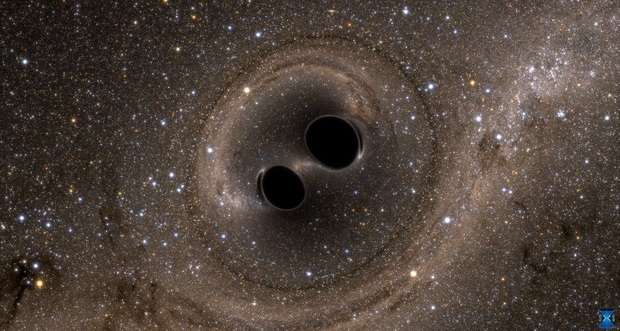LIGO expected to detect more binary black hole mergers

The Laser Interferometer Gravitational-wave Observatory (LIGO) broke the news almost one year ago about the first-ever direct observation of gravitational waves. Now, LIGO scientists hope that this year could yield even more breakthrough findings in astronomy.
On November 30, LIGO resumed its search for gravitational waves when it was switched from engineering test runs to science observations following a series of upgrades. One of LIGO's observatories, located in Livingston, Louisiana, now has about a 25 percent greater sensitivity for detecting gravitational waves from binary black holes than previously, which allows it to spot black hole mergers at greater distances than before.
"We began LIGO's second observing run (called O2) on November 30, 2016. O2 is planned to continue for approximately six months until the late spring or early summer of 2017. After it ends, we will enter another period of detector commissioning where we will work to improve the Hanford and Livingston detectors' sensitivities through the end of 2017. It's also possible that the Virgo interferometer (located near Pisa, Italy) will come online and join LIGO sometime in the next few months, which will bring an added capability to our ability to detect and locate gravitational wave sources," David Reitze of the California Institute of Technology (Caltech) told Astrowatch.net.
Reitze is the executive director of the LIGO Laboratory, which operates the LIGO Observatories. Caltech and the Massachusetts Institute of Technology (MIT) conceived of, built, and operate the LIGO Observatories, with funding provided by the National Science Foundation (NSF).
LIGO scientists hope that with more detections of black hole mergers, our understanding of black hole pairs in the universe will significantly improve. This, together with possible new observations of neutron star mergers, could provide important insights on stellar evolution and death.
"It is likely, but not guaranteed, that we will detect more binary black hole mergers during the O2 run. Binary neutron star mergers or a neutron star merging with a black hole would be a new and thus more significant discovery. However, the rates for these events are much less certain, so we can not say with any confidence when we will first see them," Reitze said.
He added that the astronomical community is greatly interested in LIGO events, because a gravitational wave source may also emit electromagnetic radiation—gamma rays, X-rays, optical, infrared, and even radio frequencies. This would be true for binary neutron star collisions, neutron star-black hole mergers, and supernovae.
"Astronomers have already searched for electromagnetic emissions from the first LIGO detections, and will continue in O2. We hope that LIGO will become increasingly important as time goes on and we make more discoveries of electromagnetically bright events," Reitze concluded.
Provided by Astrowatch.net




















